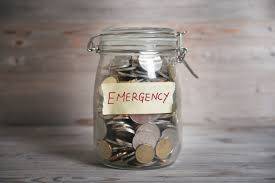How to Build an Emergency Fund: Why You Need One
Life is unpredictable. Whether it's a sudden job loss, a medical emergency, or an unexpected car repair, unforeseen expenses can throw your finances off balance. This is where an emergency fund comes ina dedicated stash of money that acts as a safety net when life throws a curveball. But how do you build one, and why is it so essential? Let’s find out.
Why You Need an Emergency Fund
An emergency fund serves as your financial buffer. Without one, you might be forced to rely on high interest credit cards or loans to cover unexpected expenses, leading to debt accumulation and financial stress. An emergency fund provides peace of mind, knowing that you can handle life’s surprises without jeopardizing your Longterm financial health.
The ideal emergency fund should cover 3 to 6 months of living expenses. This might seem daunting, but even starting with a smaller goal can make a big difference. The key is to save consistently over time.
Steps to Build an Emergency Fund
1. Calculate Your Target Amount
Start by determining how much you’ll need in your emergency fund. Add up essential monthly expenses such as rent, groceries, utilities, transportation, and insurance. Multiply that total by 3 to 6 months, depending on your comfort level and risk tolerance. This is your target amount.
2. Start Small with Realistic Goals
Don’t feel pressured to build the fund overnight. Begin by setting small, attainable goals. Start with a Mini emergency fund of $500 to $1,000 to cover immediate expenses like car repairs or small medical bills. Once you reach that milestone, work toward your larger target.
3. Make It Automatic
One of the easiest ways to build an emergency fund is by automating your savings. Set up an automatic transfer from your checking account to a separate savings account each month or paycheck. This way, you’re consistently contributing without having to think about it.
4. Cut Unnecessary Expenses
Review your budget to identify areas where you can cut back. Could you eat out less often, cancel unused subscriptions, or reduce discretionary spending? Redirect those savings into your emergency fund. Even small sacrifices can add up over time.
5. Use Windfalls Wisely
Whenever you receive unexpected money like a tax refund, work bonus, or cash gift consider putting a portion (or all) of it into your emergency fund. These windfalls can significantly boost your savings without impacting your day-to-day budget.
6. Keep the Fund Separate
It’s important to keep your emergency fund separate from your regular checking or spending account. Consider using a high yield savings account to keep your fund safe while earning interest. This separation reduces the temptation to dip into your savings for Non emergencies.
7. Avoid Dipping into It
Once you’ve started building your emergency fund, resist the urge to use it for anything other than true emergencies. New gadgets, vacations, or shopping sprees do not count as emergencies. Remember, the purpose of this fund is to protect you during financial hardship.
The Benefits of Having an Emergency Fund
Having an emergency fund not only provides financial security, but it also reduces stress. You’ll be able to handle emergencies without going into debt, improving your overall financial health. Additionally, an emergency fund gives you the freedom to make better decisions, such as waiting for the right job opportunity rather than jumping into the first one available due to financial pressure.



No comments yet
Be the first to share your thoughts!